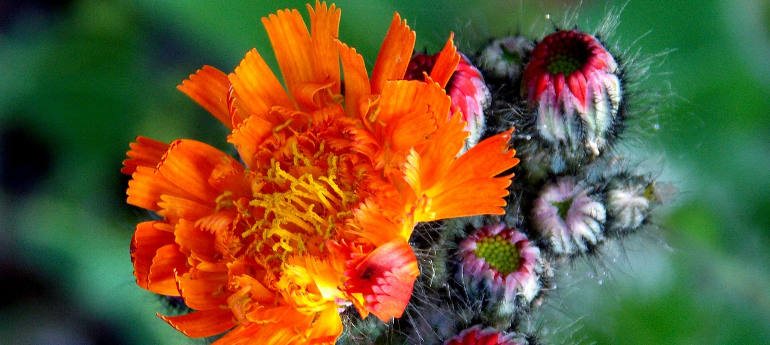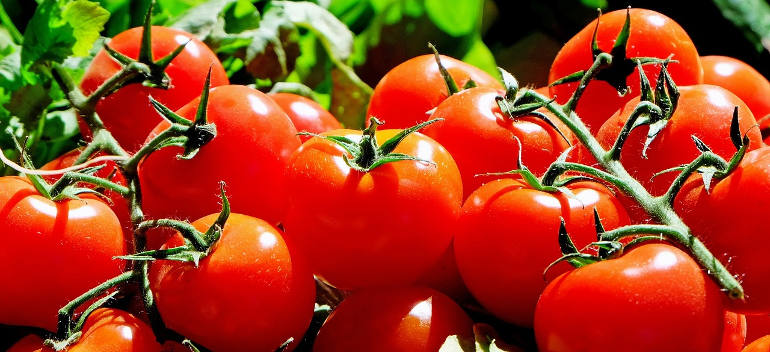
We strongly believe that planning and preparing are crucial for success in every area. Gardening is no exception, but sometimes it can be difficult to know what you are supposed to do this month—especially if you have limited experience in the gardening area.
So, we at Fantastic Gardeners decided to share our expert point of view and help spread the knowledge to all aspiring gardeners out there. We made a list of all the important gardening jobs in June you should engage with.
Table of Contents
In the vegetable garden

- This month, enjoy the last harvests of asparagus. Then, leave the ferny top growth to grow up over the summer. This will allow the plant to focus its energy on developing a strong root system.
- Make sure to keep the compost moist for newly planted container potatoes, but be careful not to overwater. Overwatering can compact the soil and prevent developing tubers from swelling.
- Add mulch around plants that need extra water, such as beans and courgettes. The mulch will help keep moisture in the ground around the roots of the plants.
- Tomato plants need to be pinched for side shoots. These can be potted up to create new tomato plants. Feeding should start once the first truss is setting fruit.
- It is important to regularly feed your fruiting vegetables, such as tomatoes, courgettes, pumpkins and chillies, with a tomato-based feed. This will help them to grow healthy and produce a good crop.
- To have a constant supply of fresh salad leaves, harvest your crop every two weeks.
- When you plant cabbages, use brassica collars to keep the root fly away.
- Hang an edible basket filled with trailing tomatoes and herbs in your gardening space, and water it regularly to keep the plants healthy all summer long.
- It’s time to harvest your early potatoes! These spuds are typically ready 10 weeks after you plant them.
- Keep an eye on your yellowing and dying onion and garlic leaves; they’re telling you that it’s time to harvest!
- Herbs like marjoram and sage can be propagated from softwood cuttings. Simply take your cuttings, plant them in gritty compost, and place them on a sunny windowsill.
- Cover the crops with horticultural fleece to protect them from carrot flies.
In the flower garden

- It’s time to give your wisteria a summer prune! This will help promote flowering next spring. Cut back all the long side shoots to 20cm.
- If you have plants growing in hanging baskets or containers in your greenhouse, it’s time to move them to their final destination. If your plants have become leggy, trim off the excess growth to encourage new, bushier growth.
- If you want your tall-growing perennials, like hollyhocks and delphiniums, to really thrive, make sure to support them with a sturdy cane.
- Plant some pretty annuals in pots and borders, water them regularly, and before you know it they’ll be taking off.
- If your annual flowers are overcrowded make sure to thin out the drifts.
- Water your flowering rhododendrons by using rainwater.
- Now is the time to cut back spring-flowering perennials, such as pulmonaria.
- In June ramblers and climbers are best trained horizontally along their supports to produce the most flowers.
- To ensure your bulb foliage remains healthy, wait for it to die down naturally before cutting back.
- If you want your fuchsias to be bushier and have more flowers, pinch out the tips.
- To propagate pinks and carnations, select non-flowering shoots and take cuttings.
- To encourage more blooms, pick sweet peas as soon as they flower.
- To ensure your roses continue to bloom, deadhead them regularly if they are repeat-flowering varieties. Otherwise, you can leave the seed heads on for a decorative touch.
- To keep your container displays and hanging baskets looking their best, give them a liquid feed every few weeks.
- After your oriental poppies have flowered, cut them back close to ground level. This will stimulate new foliage growth.
- Create a colourful border in your garden by planting pots of tall bulbs, such as fragrant lilies.
- Once your evergreen clematis has finished flowering, it’s time to do some pruning. Get rid of any overcrowded or dead stems to help maintain the plant’s shape.
- If your hardy geraniums are starting to look a bit tired, give them a trim at the end of June. This will encourage fresh growth and new flowers.
Need a professional gardener?
Enter your postcode to view our rates and availability in your area.
For questions about the services we offer visit our main site or you can always call us at 020 3404 4881
In the fruit garden
- If you want to keep birds from eating your ripe fruits, cover them with netting or fleece.
- If you notice woolly aphids on your fruit trees, it’s important to treat the infestation with soap-based spray.
- Tie in new shoots of blackberries, raspberries, loganberries and other cane fruits.
- If you want bigger and better fruits, thin out the congested branches on your fruit trees. Some fruit will naturally be shed (called the ‘June drop’), but you can improve the yield by thinning out the branches.
- If you have plants that are fruiting in containers, it is important to give them a high potash liquid feed to keep them healthy and productive. This will help ensure that your plants continue to bear fruit and remain healthy.
- Peg down strawberry runners from the parent plant. This will create new plants for next year. If you don’t need more plants, simply remove the runners completely.
- Potted blueberry plants should always be watered with rainwater, as the lime in tap water can gradually reduce the acidity of the soil.
Don’t forget the lawn
- If your lawn is looking a little dry, consider raising your lawn mower blades.
- Hot weather can take a toll on your lawn, especially if it is newly seeded or turfed. Be sure to water your lawn frequently during hot weather to keep it healthy and green.
- To tackle the rapid weed growth apply lawn weed killer.
- If you want healthy grass growth feed your lawn with fertiliser.
- Keep your lawn looking sharp by regularly recutting the edges and installing lawn edging.
In the greenhouse
- Raise your vegetables in the greenhouse with tender loving care, including beans, tomatoes, pumpkins, courgettes and sweetcorn. Give them the best chance to grow strong and healthy by planting them out when they’re ready.
- To prepare your hanging baskets and pots of summer bedding for transplanting outdoors, harden them off in sheltered spots.
- Now is the time to sow your biennial seeds, such as foxgloves, honesty, wallflowers and sweet rocket, in seed trays
- It is important to water your plants regularly, especially during warm weather. The best time to water them is in the evening or early morning so that the leaves have time to absorb the water and the plant can cool down.
- If you have pests in your greenhouse, such as whitefly or red spider mites, you may want to consider using biological controls.
- Now is the time to take cuttings from your favourite hydrangeas and pelargoniums. By doing this you can ensure that you have an ongoing supply of these lovely plants. Stand them on a bright windowsill or in a greenhouse.
- On hot days, keep your greenhouse cool by shading it and ventilating it.
- Water your greenhouse tomatoes regularly to keep them from splitting or developing blossom end rot.
- This month, take care of your pots with vine weevil control if this pest has been an issue for you in the past. The larvae become active now and can cause problems.
Other gardening jobs for June
- As the weather gets hotter, make sure to water your patio perennials and baskets more frequently. Regularly feed them with a balanced liquid fertiliser every 2-4 weeks.
- To help your plants thrive, it’s important to water them deeply and efficiently. Creating small wells around each plant will allow the water to soak into the soil. This is much more effective than simply wetting the surface, which wastes water and can lead to problems like weed growth and surface rooting that make plants more vulnerable.
- White powdery mildew can be a serious problem for plants. If you see it, remove the affected parts and spray with a fungicide to prevent it from spreading.
- Aphids are a common garden pest. To prevent them from multiplying, it’s important to inspect your plants regularly and rub or spray them off with an insecticide.
- If you have lilies in your garden, be on the lookout for scarlet lily beetles. These destructive pests can quickly decimate a lily patch if left unchecked.
- Make sure to aerate your compost bins every month by turning the compost.
Book your professional gardener! We offer garden maintenance, lawn care, tree and shrubs pruning and more!
Enter your postcode to view our rates and availability in your area.
For questions about the services we offer visit our main site or you can always call us at 020 3404 4881



